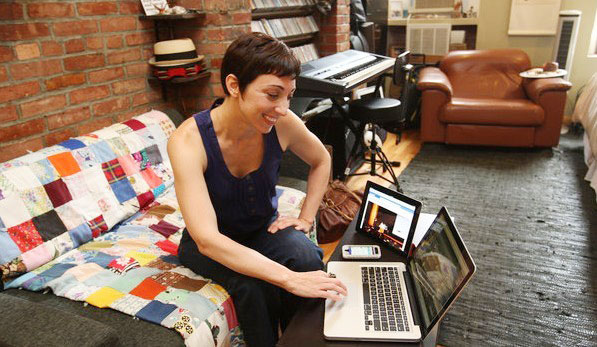For the plugged-in, too many choices
 |
|
Jessica H. Lawrence decided to focus on one site rather than a half-dozen.[Photo/The New York Times] |
 |
|
[Photo/The New York Times] |
When Jessica H. Lawrence left her job with the Girl Scouts of San Gorgonio Council in Redlands, Calif., to pursue a new life in New York City, she arrived in late January without a job, an apartment or someone to keep her warm through the winter nights.
But in less than six months, she found all three - and all because of Twitter.
The job came after a friend's tweet inspired her to attend NY Tech Meetup, where she applied for a job and became the managing director.
She found her apartment after sending a Twitter message to the founder of the Midnight Brunch supper club. That scored her an invitation and - after meeting the owners of the brownstone where the meal was held - the cellar apartment, too.
As for the boyfriend, a founder of the Noble Rot wine club, she discovered him when she began following the Rot's Twitter feed. Next week, they're moving into an apartment in Williamsburg.
"So you can see why I have this undying love for Twitter," said Ms. Lawrence, 32. Yet her devotion to one social network is not an act of sentimentality - it's part of a careful strategy for combating social media burnout. In a time when anyone with Internet access is expected to be engaged on multiple networking sites and keep a day job, Ms. Lawrence decided to focus on a singular site rather than to spread herself thin among a half-dozen.
The relentless pressure to partake of the newest networks was underscored in June with the debut of Google+, Google's social networking site. According to Nielsen, social networking is now the most popular online activity, ahead of sending e-mails, searching the Internet and playing games.
Put another way: one in every four-and-a-half minutes spent on the Web is spent on a social networking site or blog. And last year the average visitor spent 66 percent more time on such sites than in 2009, when early adopters were already feeling digitally fatigued.
"I'm on tech overload," said Ms. Lawrence, who has Facebook and LinkedIn accounts yet barely uses them anymore. "I already feel like I'm experiencing slow death by e-mail." While she loves technology and has been experimenting with Google+ since it was introduced, "I'm having a really hard time justifying adding yet another social tool to my tool `kit," she said.
But any attempt by weary networkers to scale back is complicated by the proliferation of Web sites like Klout and PeerIndex that are busily computing users' influence scores to rank them in an online hierarchy. (On Klout, each user is assigned a score from 1 to 100. If you're in the high teens, you're average; if you're in the 40s you have a healthy following; if you score 100, you're Justin Bieber).
Depending on the person you ask, this is either awesome or terrifying. In the future, brands and even potential employers could conceivably make decisions about you based on your score. (Some brands, like Virgin America and the Palms Hotel and Casino in Las Vegas, have experimented with Klout.)
The most active and organized users of social networks have daily routines for grooming their digital identities. Generally, these routines rely on automation and syndication. For instance, Web sites like Ping.fm, OnlyWire and Hellotxt enable users to post the same content across multiple networking sites with a click or two of a mouse. Other sites, like Buffer, SocialOomph and TwitResponse, allow users to write postings months in advance and schedule them for publication at a later date.


















